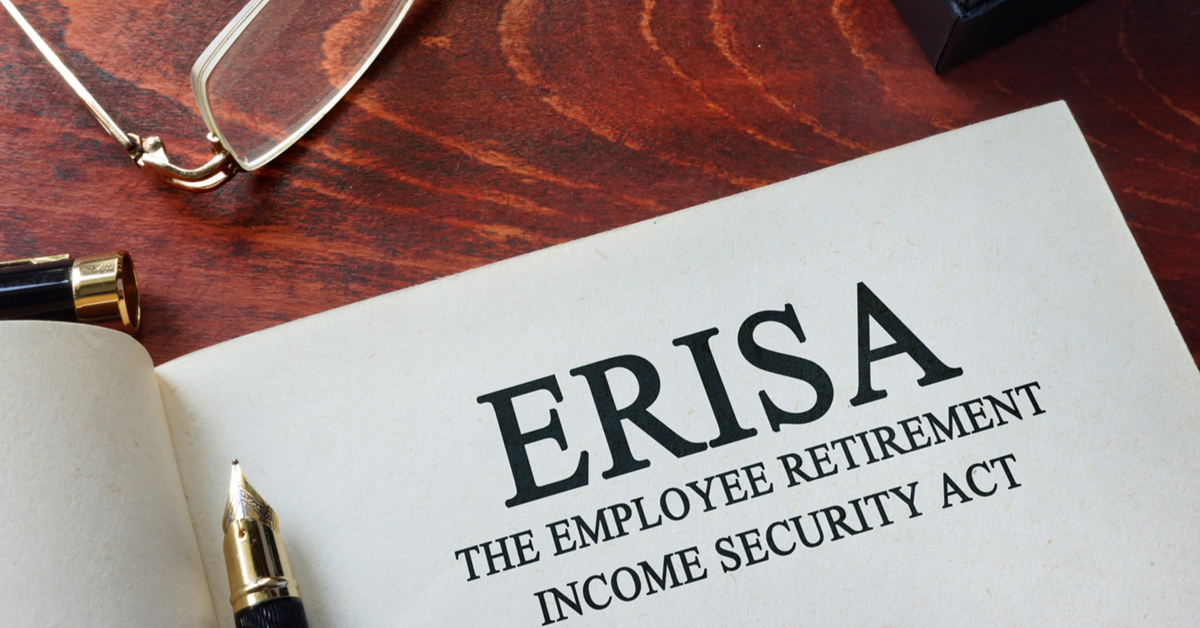
Last month, the U.S. District Court for the Southern District of Ohio denied a plaintiff’s personal injury attorney’s motion to dismiss an ERISA plan’s action to seek reimbursement against him and his firm in McKesson v. Dillow, 2020 WL 1469461, Case No. 3:19-cv-164 (S.D. Ohio, March 25, 2020).
The facts are much like any other case in this context. Diana Dillow sustained catastrophic injuries as a result of a motor vehicle collision. She retained counsel, Douglas Brannon and the Brannon Law Firm, LLC, for her liability claim against the third party responsible for her injuries. Ms. Dillow’s counsel was successful in securing a pre-suit settlement from the tortfeasor’s carrier in the amount of $5.9 million.
Ms. Dillow was an eligible dependent under the McKesson Corporation’s health care plan (a self-funded ERISA plan) which asserted a lien for medical payments made in the amount of $2.1 million. The lien was asserted by McKesson’s recovery agent, the Rawlings Company, nearly a year prior to the case’s settlement.
Negotiation efforts by Ms. Dillow’s attorney to resolve the asserted lien by Rawlings prior to settlement, apparently, ultimately broke down and failed. As a result, McKesson Corporation brought an action seeking to enforce its lien under ERISA Section 502(a)(3) against both Ms. Dillowand her attorneyand the law firm.
Mr. Brannon filed a motion to dismiss the complaint as against himself and his firm.
However, the court upheld the plan’s claim against the attorney and his firm. Following its own Sixth Circuit Court of Appeals decision in Longaberger v. Kolt, 586 F. 3d 459 (6th Cir. 2009), the Ohio district court ruled that an attorney is subject to suit under ERISA Section 502(a)(3).
Attorney Brannon also argued that the settlement funds had dissipated so there could no longer be an equitable claim on the proceeds pursuant to the U.S. Supreme Court’s decision in Montanile v. Bd. of Trustees of Nat’l Elevator Indus. Health Benefit Plan, 136 S. Ct. 651 (2016). However, the court here disagreed, as there was no evidence of dissipation, and the facts were distinguished.
Since Montanile, we at Precision Lien Resolution have advised that the Court’s holding there was very fact-specific, and attorneys should be wary to rely on the dissipation argument. In this case the court noted that in Montanile, the plan had sufficient notice of the settlement and had ample opportunity to assert its claim to preserve the settlement funds. (Although in reading Montanile, it would not seem that this was the most critical factor in the courts determination). Here, those same facts were not present. Additionally, there was no evidence submitted that the fund had actually been dissipated (a difficult argument given the size of the settlement).
The Ohio District Court went on to uphold the Plan’s claim for an accounting and unjust enrichment under the same statute.
PRACTICE POINTER # 1: While Precision Resolution has handled the negotiation and resolution of ERISA plan claims after settlement, the ideal timeframe to do so is prior to settlement. Once the settlement fund is created, a plan may immediately go to court to seek to impose an equitable lien and constructive trust on the proceeds. Plaintiff’s personal injury counsel, as this case has demonstrated, could also be named as a defendant in the plan’s action for relief.
PRACTICE POINTER # 2: The Ohio district court in this case noted that Ms. Dillow “incurred, and continues to incur, massive medical bills for treatment of her injuries.” In cases where the plaintiff is still treating for the injuries sustained in the incident, it is important to ensure not only resolution of any liens against the settlement proceeds, but also ensure that a plan is in place to provide coverage for future medical bills. In many cases, an ERISA plan’s language may permit it to deny coverage for future medical bills (related or unrelated to the underlying case), if the plan’s lien is not repaid. Keep this in mind when resolving the claims of ERISA plans, especially if the plaintiff is still covered under that particular health plan. In addition to resolving the lien, it is prudent to obtain an agreement from the plan to provide future coverage regardless of any third-party settlement.
So, where do we stand on attorney liability in self- funded ERISA reimbursement actions within the 2nd Circuit?
Clearly, no matter what jurisdiction you are in, if a plan is self-funded, state laws regulating insurance are preempted and the terms of the ERISA plan document would presumably apply. That is, New York’s anti-subrogation statute, GOL §5-335, does not override plan language establishing a right to a lien or recovery.
However, in order to enforce the reimbursement provisions, plans are typically limited to equitable remedies. Actions to obtain judgments imposing personal liability upon the defendant (the plan participant or his or her attorney) to pay a sum of money are not allowed; and neither is the imposition of a lien on the settlement proceeds in cases where the proceeds have been completely dissipated on non-traceable disbursements, based on the Supreme Court’s holding in Montanile (supra). Instead, an action in equity to enforce a constructive trust or equitable lien must seek to restore particular or specifically identified funds that are still within the defendant’s (or the attorney’s) possession and control.
In a pre-Montanile case in the Eastern District of New York, Kohl’s Dep’t Stores v. Catelli, 961 F. Supp. 2d 415 (E.D.N.Y. 2013) the court determined that since plaintiff’s counsel helped recover the settlement and took a legal fee for services in connection with the underlying action out of the settlement proceeds, they most likely exercised sufficient control over the settlement funds (identifiable/non-dissipated funds still in their control) to be a properly named defendant in any ERISA recovery action. Judge Spatt of the Eastern District, having found that a valid lien existed and the attorney had exercised “sufficient control,” refused to dismiss the action against the personal injury counsel and allowed the action to proceed.
However, in September of 2019, in a post-Montanile case within the Second Circuit, Judge Chatigny of the Unites States District Court for the District of Connecticut rejected the “sufficient control” argument as being determinative, dismissed the claim against the personal injury attorney, and closed the case. There, the court stated:
In addition, Kohl’s rested on the conclusion that the attorneys had at one point “exercised sufficient control” over the money on which the plaintiff had a lien. In Montanile, the Court held that a plaintiff cannot seek “appropriate equitable relief” for funds that are no longer in the defendant’s possession. Accordingly, I decline to follow Kohl’s.
Employee Ben. Plan of Compass Group USA, Inc. v. Miller, Rosnick, D’Amico, August & Butler, P.C., 2019 U.S. Dist. LEXIS 167732, 2019 WL 4760360 (D. Conn. 2019).
In conclusion, these ERISA reimbursement cases turn on a number of factors, the most important of which appear to be:
- The plan terms, particularly:
- whether there is an assertion of a valid lien or mere contractual recovery rights;
- whether those documents purport to waive the common fund doctrine;
- whether those documents purport to waive the made whole doctrine or other equitable defenses; and
- whether the documents identify a specific fund from which the Plan may recover, or is which required to be preserved for the satisfaction of the claimed lien.
- Whether there remains an identifiable fund, traceable to the settlement.*
*Attorneys should also consider the application of the Rules of Professional Conduct, particularly Rule 1.15, comment 4, as it relates to third party claims against specific funds or other property in the lawyer’s custody.
Paragraph (c)(4) also recognizes that third parties may have lawful claims against specific funds or other property in a lawyer’s custody, such as a client’s creditor who has a lien on funds recovered in a personal injury action. A lawyer may have a duty under applicable law to protect such third-party claims against wrongful interference by the client. In such cases, when the third-party claim is not frivolous under applicable law, the lawyer must refuse to surrender the property to the client until the claims are resolved. A lawyer should not unilaterally assume to arbitrate a dispute between the client and the third party, but, when there are substantial grounds for dispute as to the person entitled to the funds, the lawyer may file an action to have a court resolve the dispute.
Thank you to Professor Roger Baron for bringing this case to our attention.


